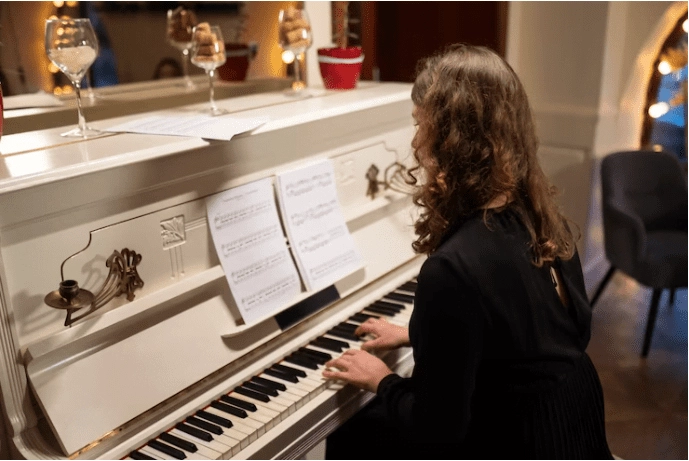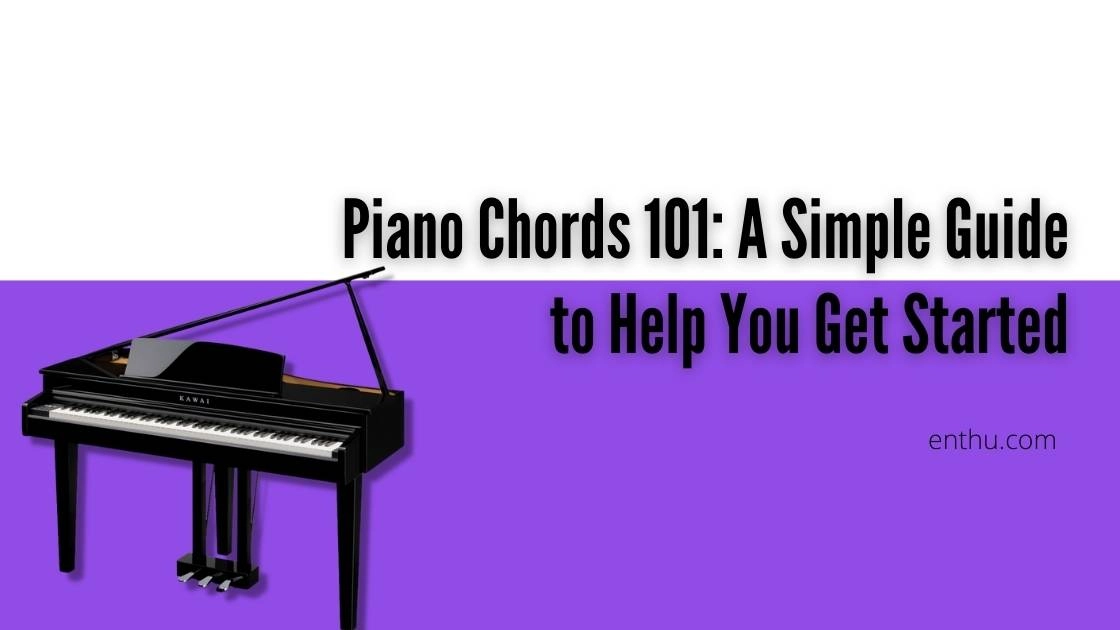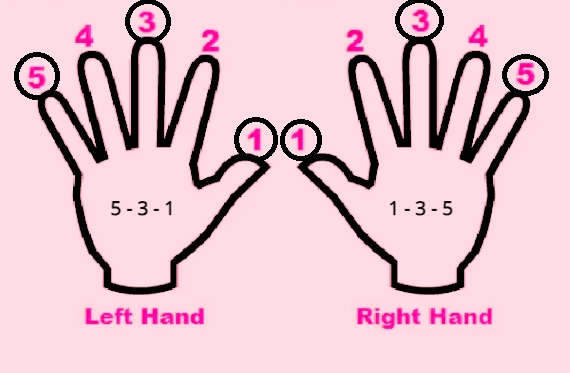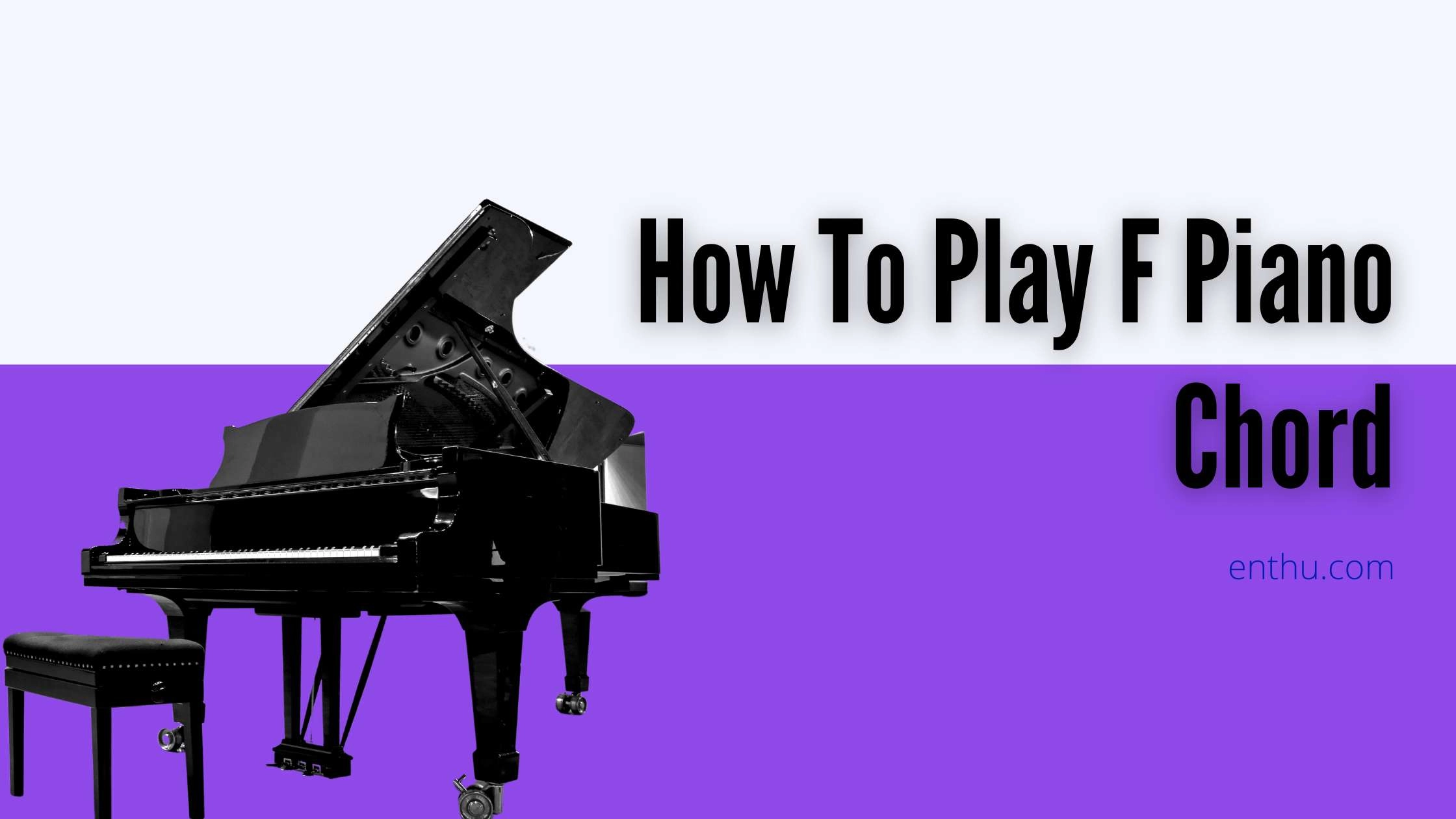Playing the piano produces a deep joy in yourself and those listening. The ability to create beautiful melodies and harmonies on this majestic instrument represents a remarkable accomplishment.
Whether performing for an audience or simply playing for your pleasure, the piano uniquely gives a feeling of great pride and power. At the same time, it will make you feel calm and satisfied.


As a part of the divine journey of learning the chords of the magnificent piano, I bring you one of the significant lessons - the F piano chord (also called F Major or Fmaj).

We will learn about its fundamental nature, how to play it, and different ways to make it sound good. It is going to be interesting!
The Basics of F Piano Chord
All aspects of the piano learning journey may initially seem insignificant, unattached, and distant. However, everything is deeply connected and comes together to help you make your music.
After you have learned the piano, you can do so many different things with music. The Fmaj is a great option to add a new chord to your repertoire because it can yield various emotions.
It sounds like the intro and throughout of the Coldplay hit "Yellow."
1. what is an F chord on a piano?
Let us first understand the meaning of a 'Chord.' What is a Piano Chord? A piano chord is like a team of three or more musical notes that you play at the same time on a piano or keyboard.

The purpose of choosing those notes is because they sound pleasant when played together. Think of chords as building blocks that help make songs sound good by adding a unique harmony to the main tune.
Major Chord: The three notes (triad) of a 'major chord' are - the main note, another one four steps higher, and one more seven steps higher. Also, you can tell it is a major chord because it has the main note's name followed by "major," like F major or B major. When you play a major chord, it usually sounds happy and strong.
Minor Chord: Conversely, a minor chord is different. It also has three notes played together, but the second note is only three steps higher this time than the main note. At the same time, the third note is seven steps higher, like in the Major Chord.
Further, you can spot a minor chord with the main note's name followed by "minor," such as Gm, C minor, D minor, etc. When you play a minor chord, it sounds sad or thoughtful.
F Major (Fmaj): What notes are in the Fmaj key? It consists of three notes (a triad): F, A, and C. F: Root of the Chord A: Major Third C: Perfect Fifth Thus, F Piano Chord = F A C

2. How to Play F Major Triad on Keyboard?
To play the Fmaj on the piano, locate the F note on the keyboard. This note is one white key to the left of the three black keys. (Look at the below diagram.)
![How to Label Piano Keys? [Pictures Included]](https://enthu.com/blog/media/x5okKB7AvnjCgot1.jpg)

Playing Fmaj
Place your thumb (first finger) on the F-note
Your middle finger (third finger) on the A note
Position the pinky finger (fifth finger) on the C note.
These three notes create a melodious F piano chord when played together correctly. When using the left hand, the pinky, middle, and thumb are to be positioned as below:

Notes | Right Hand | Left Hand |
F—A—C | 1—3—5 | 5—3—1 |
Steps for Playing the Chord as a Beginner To play the Fmaj on the piano nicely, follow these simple steps:
First, sit straight at the piano with your feet flat.
Put your right hand on the piano keys with curved fingers. Your thumb goes on the F note, your middle finger on the A note, and your pinky on the C note.
Keep your fingers right over the keys, not at an angle.
Make your fingers stronger by exercising and playing the scales and variations. It helps you press the keys better.
Keep your hand relaxed and a bit curved, not too stiff.
Start by playing the Fmaj slowly and carefully. Make sure each note sounds clear.
When you feel comfy, try playing it faster, but still make sure you hit the right keys. Speed will come with practice.
3. F Major Inversions
When you play Fmaj, you can make it sound different with the help of its inversions. Change the F triad's bottom (bass) notes - placing the respective fingers as below and start practicing them.

Inversions | Bass Note | Notes | Right Hand | Left Hand |
Root Position | F | F—A—C | 1—3—5 | 5—3—1 |
First Inversion | A | A—C—F | 1—2—5 | 5—3—1 |
Second Inversion | C | C—F—A | 1—3—5 | 5—2—1 |


4. Variations of F Piano Chord
While the basic Fmaj consists of F, A, and C notes, there are several variations you can explore to add depth and variety to your piano playing.
Some common variations of the Fmaj include - F Major The standard Fmaj chord we have already learned using F, A, and C notes. As discussed, this chord is bright and uplifting, making it a popular choice in various musical genres. F Minor (Fm / Fmin) F minor notes = F Ab C
Notes | Right Hand | Left Hand |
F—Ab—C | 1—3—5 | 5—3—1 |
Play these triad notes simultaneously to create a sad and reflective sound compared to the major chord.
Play these triad notes simultaneously to create a sad and reflective sound compared to the major chord. F7 F7 notes = F A C Eb.
Notes | Right Hand | Left Hand |
F—A—-C—-Eb | 1—2—4—5 | 5—4—2—1 |

It is suitable for blue and jazz types of music and is often used to add tension and excitement. F Suspended 4th Chord (Fsus4) Replace the A note with a B♭ to create a Fsus4 (F - Bb - C).

Fsus4 has a suspended, unresolved sound. F Major Seventh (Fmaj7) Fmaj7 notes = F A C E
Notes | Right Hand | Left Hand |
F—A—-C—-E | 1—2—3—5 | 5—3—2—1 |

It has a softer and mellow sound, making it suitable for ballads and jazz compositions. Moreover, it further has 3 different inversions.
Inversions | Notes | Right Hand | Left-Hand |
1st Inversion | A---C---E---F | 1---2---4---5 | 5---3---2---1 |
2nd Inversion | C---E---F---A | 1---2---3---5 | 5---3---2---1 |
3rd Inversion | E---F---A---C | 1---2---3---5 | 5—4—2—1 |
F6 F6 notes = F A C D
Notes | Right Hand | Left Hand |
F—A—-C—-D | 1—2—3—4 | 5—3—2—1 |

It is warm and inviting, often used in jazz and bossa nova music. Exploring these variations will expand your musical repertoire and allow you to play a broader range of songs and genres.
5. F Major Scale Practice
The below series of Fmaj scale notes. It follows the respective half (H) & whole (W) steps of W-W-H-W-W-W-H along with the finger positioning. (You may first play the scales of major chords of B, C, D, E, etc. so that the Fmaj scale is easier for you.)
Notes | Right Hand | Left Hand |
F—G—A—Bb—C—D—E—F | 1—2—3—4—1—2—3—4 | 5—4—3—2—1—3—2—1 |


6. F Piano Chord
Progressions Let's explore how Fmaj can create beautiful music using popular progressions and what piano chords go with F.
F—C—Dmin—Bb(B flat)
F—C—C7—F
F—Bb(B-flat)—C
C—F—Gmin—C
Gm7—C7—Fmaj7
Gmin—C—F
F—Bb—C—Dmin
F—Dmin—Bb(B-flat)—C
While there are no shortcuts to mastering the Fmaj, its scales and progressions can help you build the necessary skills and make playing it easier.
While there are no shortcuts to mastering the Fmaj, its scales and progressions can help you build the necessary skills and make playing it easier.


Conclusion
Mastering the basics of piano, including essential chords like the Fmaj, is a significant step on your musical journey. These foundational skills would open doors to a world of musical possibilities and creativity.
As you continue your piano-learning adventure, the following steps will involve mastering other basic chords, scales, and more complex melodies. Each step will bring you closer to becoming a skilled pianist. If you're ready to take the next step in your piano journey, we invite you to book a free trial lesson with our expert piano teacher.
FAQs
1. How does an F major chord sound?
F major sounds bright and happy, like a sunny day. It is like a musical resting point, making you feel like everything is in the right place. Further, imagine what it is like to reach home after a long journey. Some say it sounds warm and friendly, like a cozy blanket. It feels safe and comfortable listening to it.
2. What is the emotion of the F major chord?
The F major, like a unique color in music, can make you feel different emotions.
Happy About Simple Things F major is often used in songs about little joys and everyday happiness. It is like celebrating the small stuff that makes you smile.
F major is often used in songs about little joys and everyday happiness. It is like celebrating the small stuff that makes you smile.
Remembering Good Times & Feeling Hopeful Sometimes, it can make you think of good times in the past, like looking at old photos. This feeling is called nostalgia. F piano chord can also give you a feeling of looking forward to something good in the future. It is like being excited about what is coming next. But remember, how the Fmaj makes you feel can change depending on how fast the music is, how you play it, and the other sounds around it. It is like mixing different colors to make new ones. Also, other versions of the Fmaj that we learned before.
Sometimes, it can make you think of good times in the past, like looking at old photos. This feeling is called nostalgia. F piano chord can also give you a feeling of looking forward to something good in the future.
It is like being excited about what is coming next. But remember, how the Fmaj makes you feel can change depending on how fast the music is, how you play it, and the other sounds around it. It is like mixing different colors to make new ones. Also, other versions of the Fmaj that we learned before.
3. Can I change the finger placement for the F piano chord?
The suggested finger placement is thumb (finger 1) on F, middle finger (finger 3) on A, and pinky finger (finger 5) on C. However, some pianists may use alternative fingerings based on their hand size and comfort.
It is essential to maintain proper hand posture and avoid straining your fingers. Following the suggested finger positioning is necessary to help you learn faster and to develop muscle memory.
4. What are some common things to consider when playing the Fmaj?
Practice finger exercises and scales to make your weak fingers stronger. Also, relax your hands and fingers and stretch them often.
Sometimes, (muted) notes sound quiet or unclear. So, press each note evenly with your fingers right over the keys. Also, use a metronome to time the notes correctly and practice keeping a steady rhythm. Start slow and increase tempo gradually.

5. What do I do if I need to be more confident about my chords?
Learning can be frustrating, especially for beginners. Be patient, regularly practice, and celebrate minor improvements & milestones. Don't overdo it; take short breaks to avoid fatigue and frustration.
The solution for the lack of confidence and the feeling that you need to go on the right track is to choose songs with the F chord and play along. Record yourself to listen for mistakes and track progress.


Comments